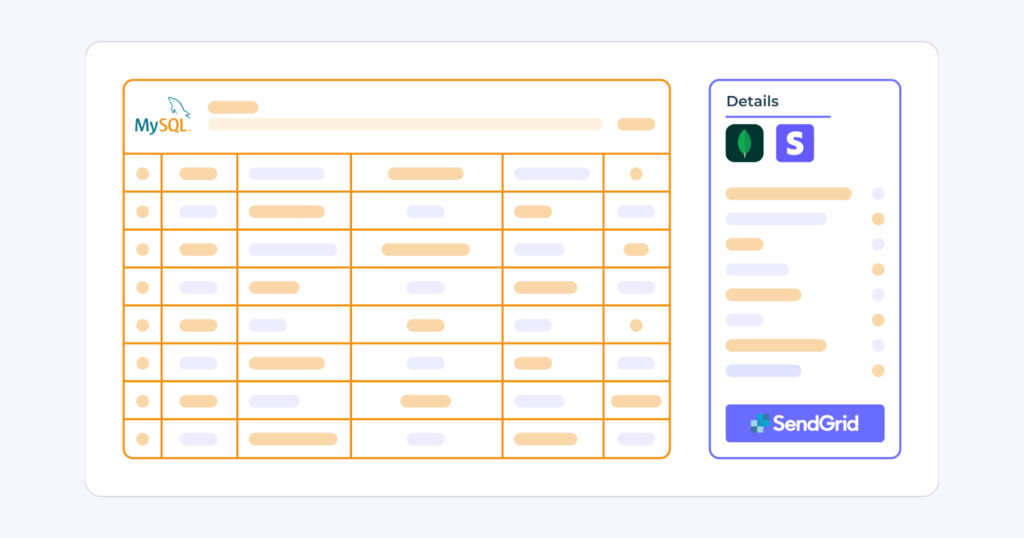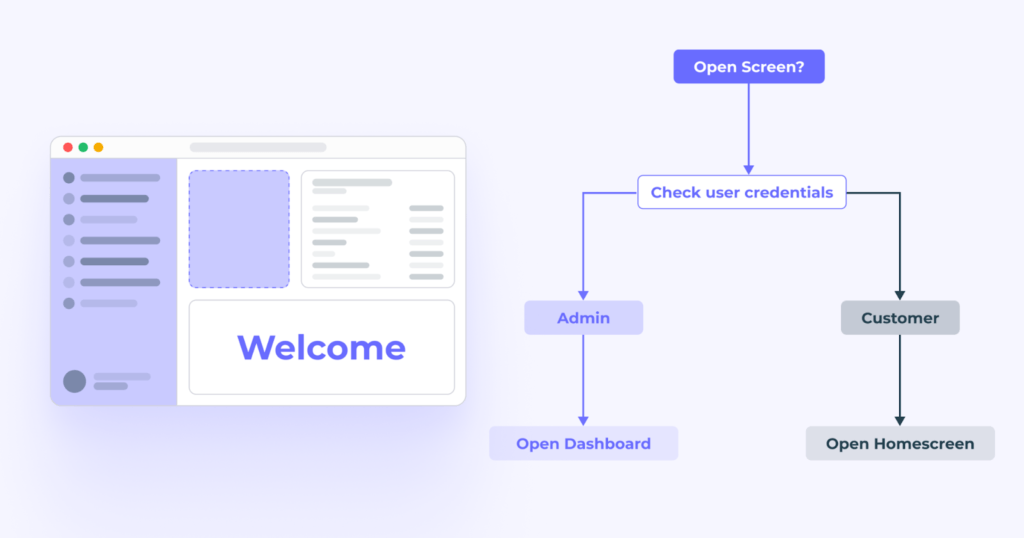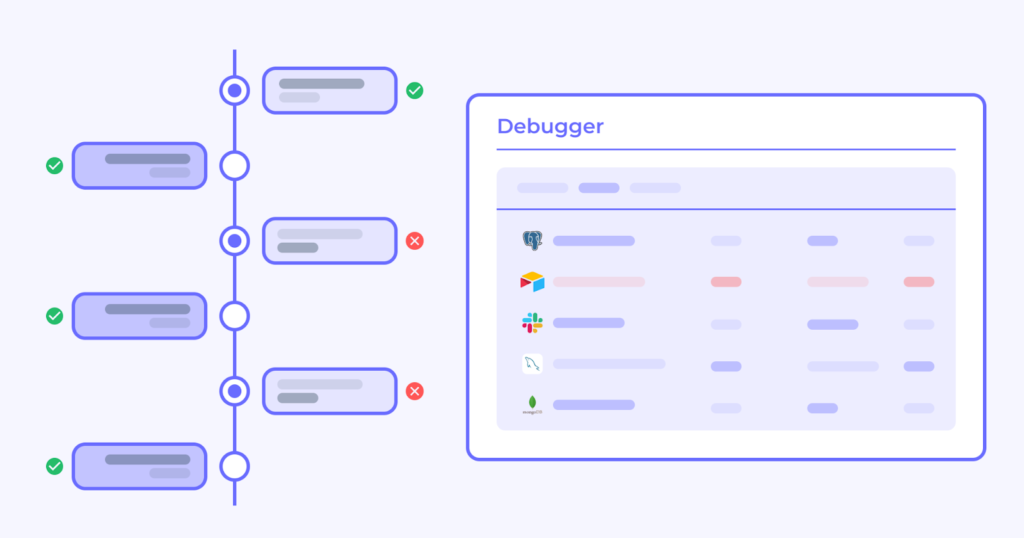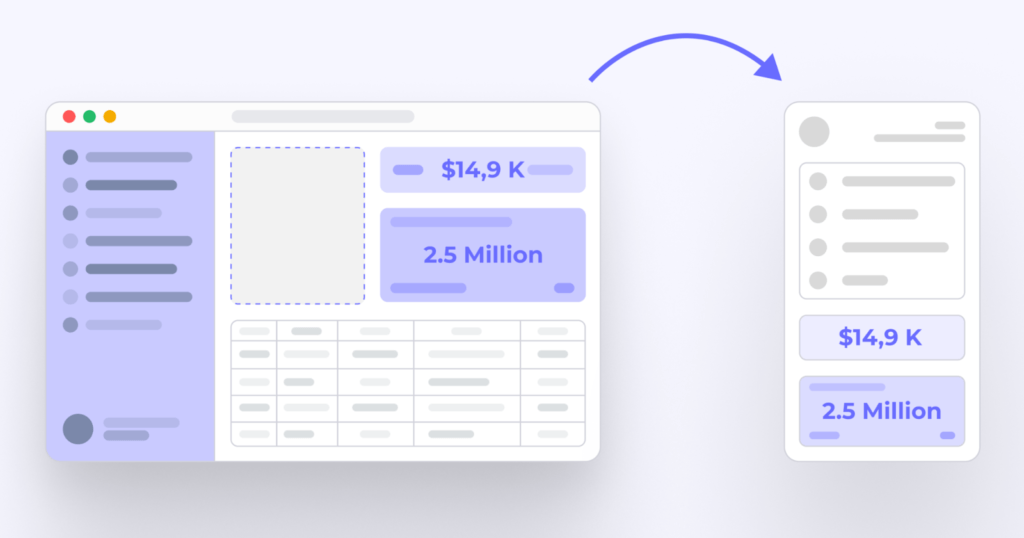intro
Database administrators (DBAs) bear the primary responsibility for managing an organization’s data infrastructure. Between increasing amounts of data and evolving tech landscapes, DBAs face many challenges. These include integrating systems to ensure performance and security and managing corporate data for enterprise users.
Fortunately, low-code tools have emerged as a game-changer, enabling DBAs to supercharge their productivity and broaden their horizon, with capabilities like integrating disparate data sources easily, managing granular access permission, and designing bespoke database front ends for business users to interact with corporate data.
In this blog, we’ll explore how low-code is reshaping the role of DBAs and empowering them to navigate the complexities of database management with ease and efficiency.
Who is a DBA?
Database administrators, or DBAs, are the professionals responsible for managing and maintaining an organization’s database systems.
Essentially the custodians of the organization's data treasures, as the name suggests, a DBA's primary role is to ensure that the organization's databases are secure, efficient, and available to meet the needs of the business.
Yet, in the ever-changing workspace landscape, DBAs are faced with a set of challenges such as making sure everything runs well and data is safe but also connecting different systems smoothly. Or to control who gets access to the important data, like gatekeepers.
Some of the key responsibilities and tasks associated with a database administrator include:
- Database Design: Involves planning, selecting appropriate DBMS, defining data schemas, and optimizing structures for performance and scalability.
- Installation and Configuration: Encompasses setting up and configuring database software effectively on organization servers and networks.
- Data Security: Enforces robust security measures like access control, encryption, and monitoring to safeguard sensitive data.
- Performance Optimization: Monitors and adjusts database systems to optimize query performance and handle increasing workloads.
- Backup and Recovery: Establishes procedures for data safeguarding and executes recovery plans in case of data disasters.
- Maintenance and Documentation: Includes regular tasks for database upkeep like indexing, data purging, and maintaining documentation for compliance and knowledge sharing.
The DBA-Business User dynamic
Database administrators (DBAs) perform several tasks to help business users effectively access and manipulate data as needed and benefit from the database systems.
- User Management: Create, manage, and deactivate user accounts while assigning permissions as needed.
- Query Optimization: Enhance data retrieval by optimizing queries through analysis, indexing, and tuning.
- Performance Monitoring: Continuously monitor and address database performance issues, including bottlenecks and resource constraints.
- Data Availability and Recovery: Ensure continuous data access with high availability and failover mechanisms, and protect against data loss with robust backup and recovery procedures.
- Security and Access Control: Enforce user authentication, authorization, and audit logging to safeguard sensitive data and ensure compliance.
- Data Integration: Consolidate and use data from various sources for reporting and analysis.
- User Support: Assist business users with database access, data retrieval, and manipulation.
- Compliance and Regulations: Ensure database compliance with industry-specific regulations and data privacy laws through encryption, auditing, and access controls.
Challenges DBAs faces
Database administrators (DBAs) encounter several intricate challenges in managing internal database administration tasks. These challenges demand a high level of expertise and can be quite time-consuming.
- Complex Query Creation: Continually grapple with the need to craft intricate queries that enable business users to access specific data. This task can be time-consuming and complex.
- Data Integrity and Security: Striking a balance between providing access to authorized users while safeguarding sensitive data is paramount.
- Customized User Interfaces: Creating custom interfaces to ensure limited data access requires meticulous attention to detail.
- Data Integration: Integrating data from disparate sources to form a cohesive and reliable dataset is a challenging task requiring significant time and expertise to establish a single source of truth.
- Complex Problem Solving: Resolving complex database issues demands in-depth knowledge and problem-solving skills. These problems can range from data corruption to system failures and may require collaboration with other IT teams, vendors, or external experts. Finding solutions to these challenges can be time-intensive and stressful.
Low-code in a nutshell
For Database Administrators (DBAs) whose world revolves around the intricacies of databases, query optimization, integrations, and data management, the concept of "low-code" is just the game-changer that users have their eyes on, if not already adopted by now.
Low-code platforms are like a breath of fresh air for Database Administrators. They offer DBAs the opportunity to work their magic effortlessly.
Low-code is a revolutionary approach that simplifies and accelerates custom frontend development on top of any data source with a set of visual app builder, pre-built UI components, user permissions and automation that significantly reduces the amount of traditional development required to create applications. For a DBA, that translates to a secure toolset to create custom database UIs or CRUD apps on top of corporate databases.
Picture it as a set of custom Lego blocks for app creation. You assemble the pieces you need, just like building with Lego blocks, but instead, you're constructing custom applications.
Note: It's important to note that a low-code platform doesn't replace traditional coding entirely; rather, it complements it. You can still write custom code when needed, but low-code handles many of the routine and foundational aspects of frontend building, saving significant time and effort.
5 Major ways low-code simplifies the lives of Database Administrators
Low-code platforms offer a drag-and-drop builder for designing frontend user interfaces. This simplifies the process of creating secured custom applications. DBAs can visually design and build apps effortlessly while ensuring standardization and compatibility. Suppose a DBA needs to create a data access portal for various departments. With low-code, they can design the portal's interface graphically, saving time and reducing the need for extensive coding.
Let's dive into some key aspects of low-code platforms that are revolutionizing the way DBAs operate:
1. Efficient Data Integration
Low-code platforms provide seamless integration with REST or GraphQL APIs, along with ready connectors. You can easily connect diverse data sources, streamlining data integration tasks.

Imagine you need to aggregate data from multiple databases into a unified dashboard. Say, the customer success team needs a single source of truth to quickly resolve support tickets and the data currently sits across a MySQL database, HubSpot CRM, and Zendesk ticketing system. Low-code's integration capabilities allow you to connect these sources effortlessly, and create a holistic view of the data.
2. Simplified User and Permission Management
Low-code platforms often include built-in user and permission management features. You can efficiently manage user access, API and database permissions, and roles within the applications they create.

Say you have a customer database that holds contact, order, and payment details of the customer. Different teams - sales, marketing, support, accounting - need to access the details within the DB. With built-in user management, easily assign permissions and roles and control how different users access and interact with the sensitive data on the frontend UI you build.
3. Enhanced Prototyping, Debugging and Iteration
You can leverage low-code technology for rapid prototyping and testing of database changes or optimizations. They can create interactive prototypes of database interfaces to gather feedback from stakeholders and ensure alignment with business requirements.
Debugging support available out-of-the-box makes it easier to identify and rectify issues within applications. Additionally, they maintain version history, allowing you to roll back changes or track iterations.

Suppose you create a data reporting tool for a department. If an issue arises, you can use low-code debugging capabilities to pinpoint and resolve it quickly. The version history ensures you can revert to a previous working state if needed.
4. Multi-Device Compatibility
Low-code technology allows you to create applications that are compatible with various devices, including web, mobile, and tablets. This flexibility ensures that end-users can access applications seamlessly across different platforms.

Say you were tasked with developing a sales tracking tool that can use low-code to build an application accessible on both desktop computers and mobile devices. This versatility enhances user experience and accessibility across browsers.
5. Standardization and Consistency
Low-code platforms provide comprehensive pre-built UI components and templates that can help maintain a consistent look and feel across applications. This is especially valuable when multiple developers are working on a project.

Let's say you were to collaborate with developers to create a suite of data reporting tools. With low-code's pre-built UI components and templates, you can ensure a uniform and professional appearance across all the tools that you build with low-code or the developers build, enhancing the user experience and maintaining consistency.
Bandwidth, a North Carolina, USA-based communications platform as a service company, shares that with low-code platform DronaHQ, they could empower their teams to build UIs and essentially become full-stack engineers using a comprehensive yet easy-to-use tool DronaHQ; Build UIs very quickly and utilize data from existing APIs and backend services.
Conclusion
Low-code platforms provide a starting point, but their potential goes far beyond the basics. These database GUIs and custom front-end interfaces can evolve into full-fledged applications. Think forms, operational tools, client portals, and public-facing apps, all seamlessly integrated with other services and APIs. Automated email notifications with PDF report attachments, Slack alerts, Salesforce or Stripe integrations, or harness cutting-edge APIs like OpenAI to build AI-powered applications swiftly and securely.
Low-code platforms provide DBAs with a secure toolkit to craft custom front-end interfaces, establish API integrations, and fine-tune data access and actions. This capability offers precise control over data, configuring role-based views, and ensuring users access only relevant information. Armed with low-code, DBAs can revolutionize data access and empower business users to take effect actions.


